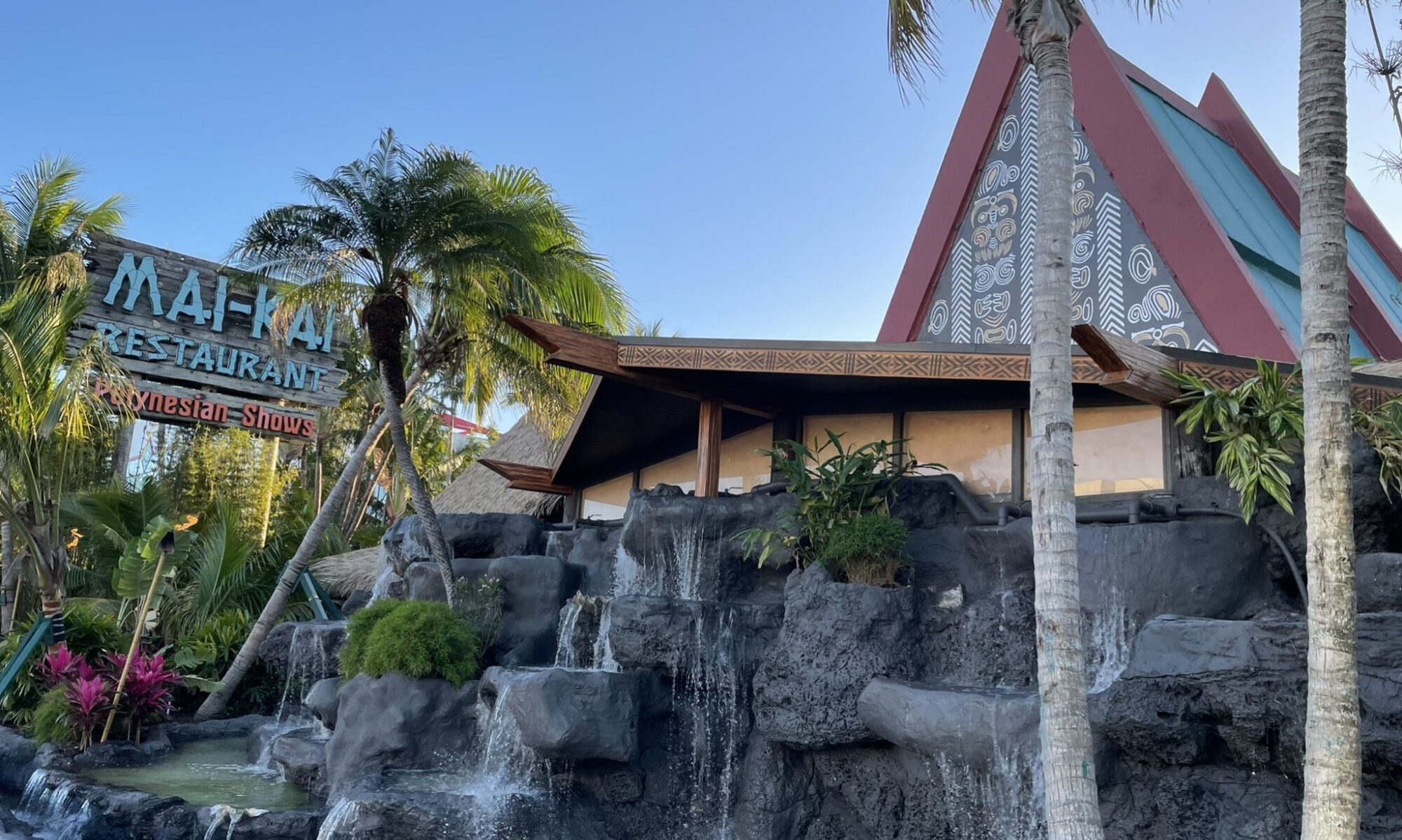Updated October 2023
See below: Our Black Magic review | Tribute recipes
* The Black Magic on Spike’s Breezeway Cocktail Hour
* The Black Magic Cocktail is a new twist on the classic
Postscript: The Black Magic picked up by bloggers and bartenders, goes viral on social media
Related: Mai-Kai cocktail guide
The Mutiny is a worthy foe in the battle of the tropical titans
Prior to the opening of The Mai-Kai in 1956, there were perhaps other icy cocktails that employed dark rum and coffee as key ingredients. But none perfected it quite like the Black Magic.

The drink that has spawned dozens of imitators – and even two similar concoctions at The Mai-Kai – has taken on legendary status in the Tiki cocktail community. The Black Magic is the oldest of what some call the “Holy Trinity” of large snifter drinks at The Mai-Kai: The Black Magic, Mutiny and The Hukilau.
One of the keys to this drink is a distinctive dark rum favored by original Mai-Kai mixologist Mariano Licudine: Dagger was a dark Jamaican brand that stopped production some time ago. It became somewhat of a holy grail of Tiki mixologists looking to duplicate the key flavor in many Mai-Kai cocktails, especially the Black Magic.
During a back-bar tour in November 2011, Manager Kern Mattei revealed the secret of how that flavor is preserved: An obscure dark rum called Kohala Bay that was produced by Wray & Nephew, the same company that previously made Dagger.

Needless to say, we immediately went on an intensive search, but short of taking a trip to Jamaica it was nearly impossible to locate. We were told it was being imported only to Florida, and The Mai-Kai was one of only two bars to serve it. After some digging, however, we miraculously found a rare retail outlet that carried Kohala Bay and immediately stocked up. Our discovery of Kohala Bay sparked many other tribute recipes that you’ll find in this guide, and also spurred many other home mixologists to seek out the rum. Click here for more on the history of Kohala Bay at The Mai-Kai.
But all good things must come to an end. Kohala Bay was taken off the market in April 2016 and has not returned. While still seeking out an appropriate dark and funky run to fill the bill, The Mai-Kai switched to one of the Appleton Estate rums as its dark Jamaican mixer. Then, suddenly, a new rum appeared in April 2019. It’s a secret in-house multi-rum blend, similar to one of those we had been touting here on the blog. Click here for an in-depth guide along with all the suggested Kohala Bay substitutes.

The name Black Magic comes from the combination of dark rums and coffee, which sets this drink apart from most others from its era. It was reportedly created by Licudine while he was still working for Donn Beach as the No. 2 bartender at the Don the Beachcomber restaurant in Chicago. But even Beach’s top men were not given the opportunity to contribute their own creations to his legendary drink menu.
Lured to Fort Lauderdale to run The Mai-Kai’s bar and create what would decades later become an iconic menu in its own right, Licudine borrowed heavily from Beach’s classics but also added his own flair (Mara-Amu, Derby Daiquiri, etc.). The Black Magic may be his crowning achievement, and it was his first creation to appear on a Mai-Kai menu.
While it’s not nearly as complex, an early Don the Beachcomber cocktail from the 1930s called the Jamoca could possibly have influenced Licudine, since he worked at Don the Beachcomber in Los Angeles at the tail end of that decade. As revealed by Tiki cocktail historian Jeff “Beachbum” Berry in his 2007 book, Sippin’ Safari, the Jamoca contains 1/2 ounce fresh lime juice, 1/2 ounce coffee syrup, 1 ounce chilled coffee, 1 ounce gold Puerto Rican rum, 1 ounce gold Jamaican rum, and 4 ounces of crushed ice. Blended at high speed for 5 seconds and poured into a specialty glass, it’s a coffee-heavy drink that hits few of the high notes later achieved by Licudine with the Black Magic. Berry theorized that it may have been an early Donn Beach experiment inspired by turn-of-the-century soda fountain fare. It’s historically worth noting, but probably not a true ancestor of the Black Magic. We consider this classic to be a true Mariano Licudine original.
************************** Continue reading “Mai-Kai cocktail review: The Black Magic emerges from the darkness as a true classic”
















